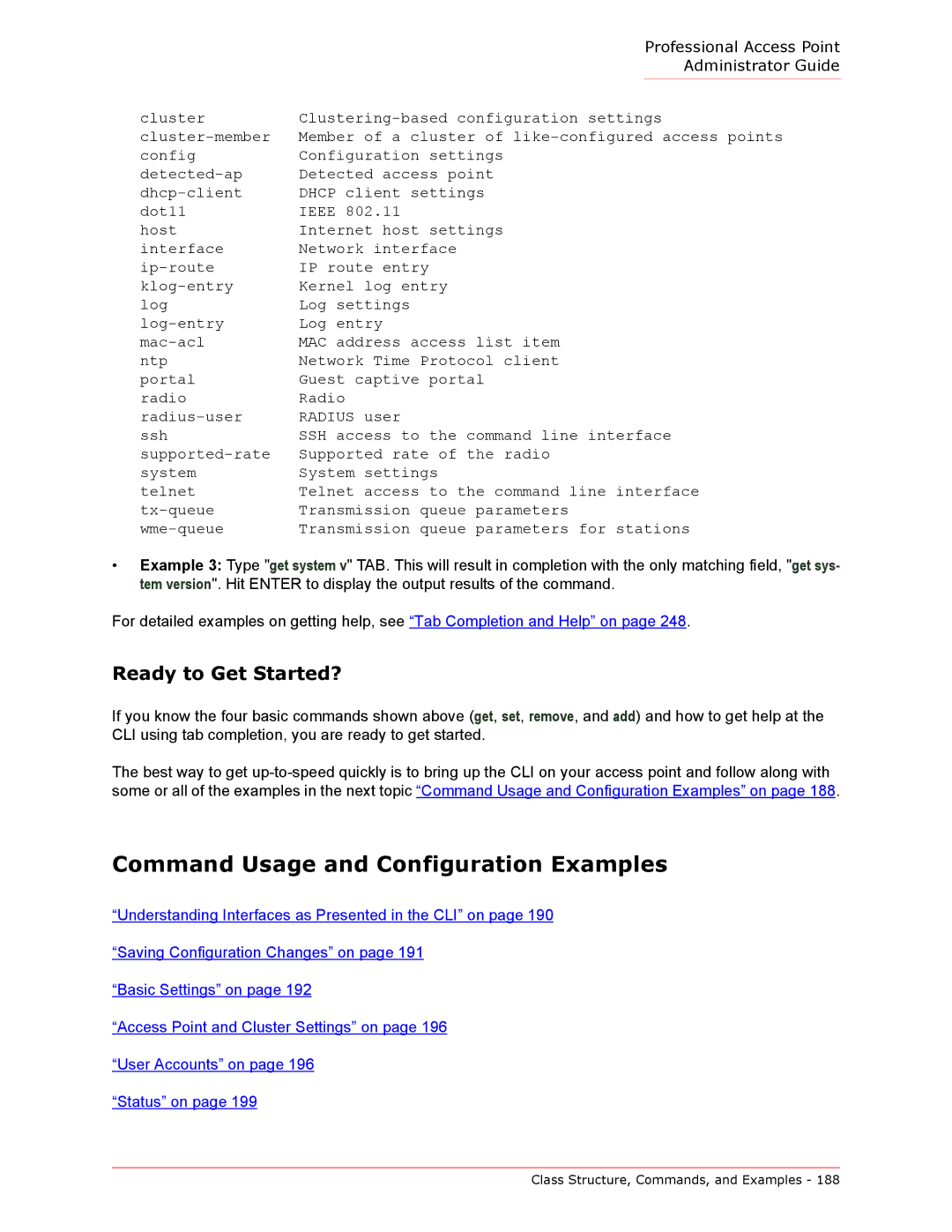|
| Professional Access Point |
|
| Administrator Guide |
|
|
|
cluster | ||
Member of a cluster of | ||
config | Configuration settings | |
Detected access point | ||
DHCP client settings | ||
dot11 | IEEE 802.11 | |
host | Internet host settings | |
interface | Network interface | |
IP route entry | ||
Kernel log entry | ||
log | Log settings | |
Log entry | ||
MAC address access list item | ||
ntp | Network Time Protocol client | |
portal | Guest captive portal | |
radio | Radio | |
RADIUS user | ||
ssh | SSH access to the command line interface | |
Supported rate of the radio | ||
system | System settings | |
telnet | Telnet access to the command line interface | |
Transmission queue parameters | ||
Transmission queue parameters for stations | ||
•Example 3: Type "get system v" TAB. This will result in completion with the only matching field, "get sys- tem version". Hit ENTER to display the output results of the command.
For detailed examples on getting help, see “Tab Completion and Help” on page 248.
Ready to Get Started?
If you know the four basic commands shown above (get, set, remove, and add) and how to get help at the CLI using tab completion, you are ready to get started.
The best way to get
Command Usage and Configuration Examples
“Understanding Interfaces as Presented in the CLI” on page 190 “Saving Configuration Changes” on page 191
“Basic Settings” on page 192
“Access Point and Cluster Settings” on page 196 “User Accounts” on page 196
“Status” on page 199
Class Structure, Commands, and Examples - 188
